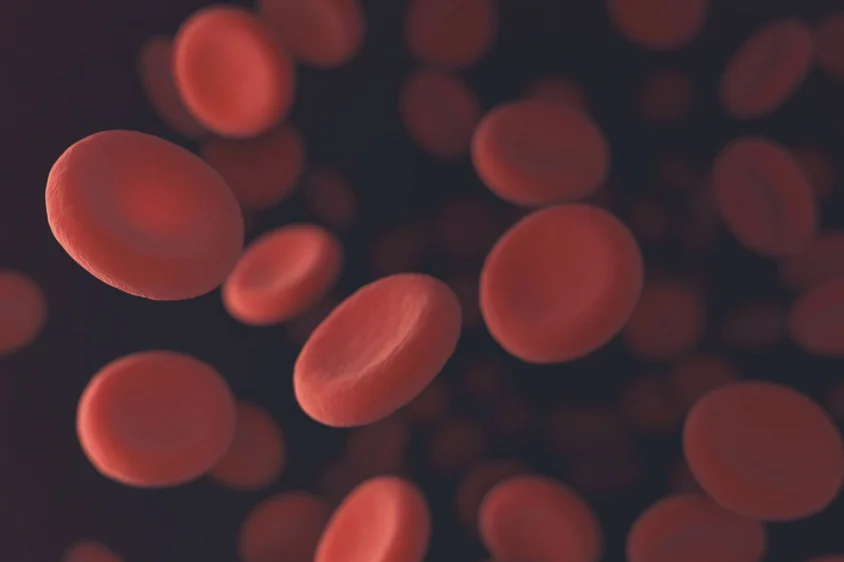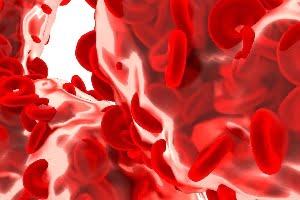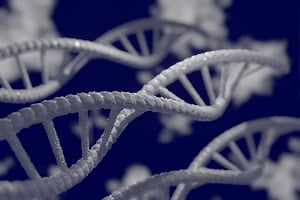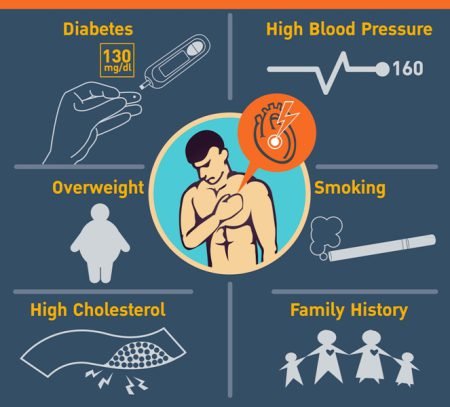Thalassemia
Thalassemia is an inherited blood disorder that affects the body’s ability to produce oxygen carrying pigment, hemoglobin and red blood cells. Any person affected with thalassemia will have lesser number of red blood cells and hemoglobin. The red blood cells may also be too small in size. The impact of thalassemia may range from mild to severe and life-threatening. Approximately 100,000 newborns are delivered every year with severe forms of thalassemia. Thalassemia occurs mostly in people with Mediterranean, South Asian, and African ancestry. The main symptoms of thalassemia include bone deformities, dark urine, late growth and development, excessive fatigue, yellow or pale skin etc.
Thalassemia occurs due to an abnormality or mutation in one of the genes involved in hemoglobin production and is inherited from the parents. If only a single parent is the carrier for thalassemia, the offspring may develop a form of the disease known as thalassemia minor. People with this disease don’t have any symptoms and are the carriers of the disease. If both the parents are carriers of thalassemia, a person has a greater chance of inheriting a more serious form of the disease.
According to the Centers for Disease Control and Prevention Trusted Source (CDC), thalassemia is most common in people from Asia, the Middle East, Africa, and Mediterranean countries like Greece and Turkey.
What are the Different Types of Thalassemia?
There are two main types of thalassemia:
- Alpha thalassemia
- Beta thalassemia
Alpha Thalassemia
Alpha thalassemia is a blood disorder that decreases the production of normal hemoglobin. Hemoglobin is the protein in red blood cells that transports oxygen throughout the body. Alpha thalassemia is the result of deficient or no synthesis of alpha globin chains, resulting in excess beta globin chains. Normally, alpha globin chain production is controlled by two genes on each chromosome number 16. Deficient production is usually caused by removal of one or more of these genes. If a single gene gets removed, it results in alpha thalassemia silent carrier status, in which there are no symptoms and the hematological findings are normal. Removal of two-genes results in alpha thalassemia trait (minor) with microcytosis and usually no anemia. The three-gene removal results in major production of hemoglobin H (HbH), which has four beta chains (beta4). Alpha thalassemia intermedia, also called as HbH disease, causes microcytic anemia, hemolysis, and splenomegaly. The removal of four-genes results in major production of hemoglobin Bart’s (Hb Bart’s), which has four gamma chains (gamma4). Alpha thalassemia major along with Hb Bart’s usually results in fatal hydrops fetalis.
Understanding Thalassemia Trait
Symptoms of Alpha Thalassemia
People with alpha thalassemia are characterized by reduced amounts of normal hemoglobin due to which there occurs shortage of enough oxygen in the body tissues. Affected individuals also have a deficiency of red blood cells (anemia), which can cause yellowness of skin, weakness, fatigue, and even more serious complications.
Types of Alpha Thalassemia
There are two types of alpha thalassemia which can cause health problems. One is known as hemoglobin Bart hydrops fetalis syndrome or Hb Bart syndrome, and is the more severe type. Another is a milder form known as HbH disease.
Hb Bart syndrome
Hb Bart syndrome is characterized by hydrops fetalis, a condition in which excess fluid builds up in the body of the fetus before birth. The main symptoms of this disease include severe anemia, hepatosplenomegaly (enlarged liver and spleen), heart defects, and abnormalities of the urinary system or genitalia. Because of these serious health problems, most babies with this condition are stillborn or die soon after birth. Hb Bart syndrome also causes serious complications in women during pregnancy, like dangerously high blood pressure with swelling (preeclampsia), premature delivery, and abnormal bleeding.
HbH disease
HbH disease usually causes mild to moderate anemia, hepatosplenomegaly, and yellowing of the eyes and skin (jaundice). Some affected individuals also undergo bone changes like overgrowth of the upper jaw and an unusually prominent forehead. The features of HbH disease are usually found in early childhood, but affected individuals typically live into adulthood.
Diagnosis of Alpha Thalassemia
Alpha thalassemia minima shows no laboratory changes on CBC and is therefore called a silent carrier. This is usually diagnosed after a child is born with Hemoglobin H disease. This can only be determined with the help of genetic testing.
Sometimes alpha thalassemia minor is identified on newborn screen, but not always. The test shows positive results for Hemoglobin Bart’s or fast bands. Many people with alpha thalassemia minor have no idea about the disease. This is usually diagnosed during a routine complete blood count (CBC). The CBC results reveal a mild to moderate anemia with very small amount of red blood cells. This can be sometimes confused with iron deficiency anemia. Commonly, if iron deficiency anemia is ruled out along with beta thalassemia trait, the patient has alpha thalassemia trait and it can be confirmed by genetic testing.
Hemoglobin H can also be identified on the newborn screen. These children are usually referred to hematologists to be monitored closely. However some patients are identified later in life during work-up of anemia.
Hydrops fetalis has not any specific diagnosis test, but rather characteristic features can be revealed on the neonatal ultrasound. Sometimes, the loss of four alpha globin genes is found during the work-up for the cause of hydrops.
Treatment for Alpha Thalassemia
Specific treatment for alpha thalassemia is determined by a child’s doctor based on the following:
- Child’s age, overall health, and medical history
- Level of the disease
- Child’s tolerance to specific medications, procedures, or therapies
- Expectations for the course of the disease
Common treatment for alpha thalassemia may include:
- Folic acid doses
- Blood transfusions if needed
- Chelation therapy against iron overload
- Removal of spleen if required
- Allogeneic stem cell transplantation
Beta Thalassemia
Beta thalassemia occurs due to less or no synthesis of beta globin chains, resulting in increased number of alpha chains. The synthesis of Beta globin is controlled by one gene on each chromosome 11. Beta thalassemia generally occurs due to more than 200 point mutations and rarely deletions of the two genes. Beta globin chain production ranges from normal to completely absent, leading to unstable degrees of excess alpha globin to beta globin chain production. The one gene defect, beta thalassemia trait (minor), produces no symptoms and results in microcytosis and mild anemia. If the synthesis from both genes is severely reduced or absent, the person suffers from beta thalassemia major or Cooley anemia. Persons with beta thalassemia major never show symptoms at birth because of the presence of HbF, but symptoms start developing after six months of age. If the synthesis of beta chains is severely reduced, the person suffers from thalassemia intermedia. Such persons experience symptoms that are less severe and do not need lifelong transfusions to survive past 20 years of age.
Types of beta thalassemia
Generally, two genes code for beta globin, and each gene is inherited from both the parents. Beta thalassemia occurs due to mutations in these genes. Following are the sub-categories of beta thalassemia:
- Beta thalassemia major
- Beta thalassemia intermedia
- Beta thalassemia minor
Beta Thalassemia Major
It is the most severe form of thalassemia. Individuals with this condition require blood transfusions throughout the life. People with this form of the disease develop symptoms within the first two years of life. The infant fails to thrive and often has difficulty in feeding, gets easily tired and suffers from severe anemia. Besides this some other complications include enlarged spleen, heart and liver and misshapen bones. In many cases, regular blood transfusions are required to replace the blood with healthy red blood cells. However, these regular transfusions cause build up of excess iron in the blood that can damage the heart, liver and endocrine system. In such cases, chelation therapy may be needed to remove the excess iron from the body.
Beta Thalassemia Intermedia
The symptoms of thalassemia intermedia are milder as compared to thalassemia major and often appear later in life. Individuals with this form of disease develop mild-to-moderate anemia and growth abnormalities. The patients do not require transfusions when they are younger but may need it later in their life.
Beta Thalassemia Minor
This form of thalassemia usually has mild symptoms and the patients do not require blood transfusion. Although this condition is not life-threatening but quality of life may be affected due to mild or moderate anemia. This form of the condition is also called as beta thalassemia trait.
Sickel-beta thalassemia
Some individuals inherit one gene for beta thalassemia from one parent and another gene for sickle hemoglobin (hemoglobin S) from the other parent. This condition is called sickle-beta thalassemia and presents similar symptoms as that of sickle cell disease such as pain, fatigue, an enlarged spleen and susceptibility to infections.
Symptoms of Beta Thalassemia
Beta thalassemia has different symptoms, based on the type of the disorder inherited. Children born with thalassemia major present symptoms like pale skin, fussiness, poor appetite, infections, slow growth, abdominal swelling, jaundice, enlarged spleen, liver, and heart, and brittle and deformed bones.
Thalassemia minima often cause no symptoms in the affected individuals.
In thalassemia intermedia, moderate to severe symptoms are found which include extreme tiredness or fatigue, pale skin, delayed growth, weak and fragile bones, and enlarged spleen.
How is beta thalassemia diagnosed?
Beta thalassemia can be diagnosed with the help of following tests:
Complete blood count (CBC)
This test helps to check the size, number, and maturity of different blood cells in a set volume of blood.
Hemoglobin electrophoresis with hemoglobin F and A2 quantization
This test helps to differentiate various types of hemoglobin.
How is beta thalassemia treated?
Healthcare providers figure out the best treatment for beta thalassemia based on following factors:
- age, overall health, and medical history
- How sick a person is
- How well a patient can handle certain medicines, procedures, or therapies
- For how long the condition will last
Some common treatment options include:
- Regular blood transfusions
- Iron chelation therapy
- Surgical removal of spleen, if required
- Daily folic acid supplements
- Surgical removal of the gallbladder
- Routine heart and liver function tests
- Genetic tests
- Bone marrow transplantation







